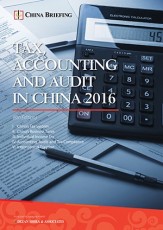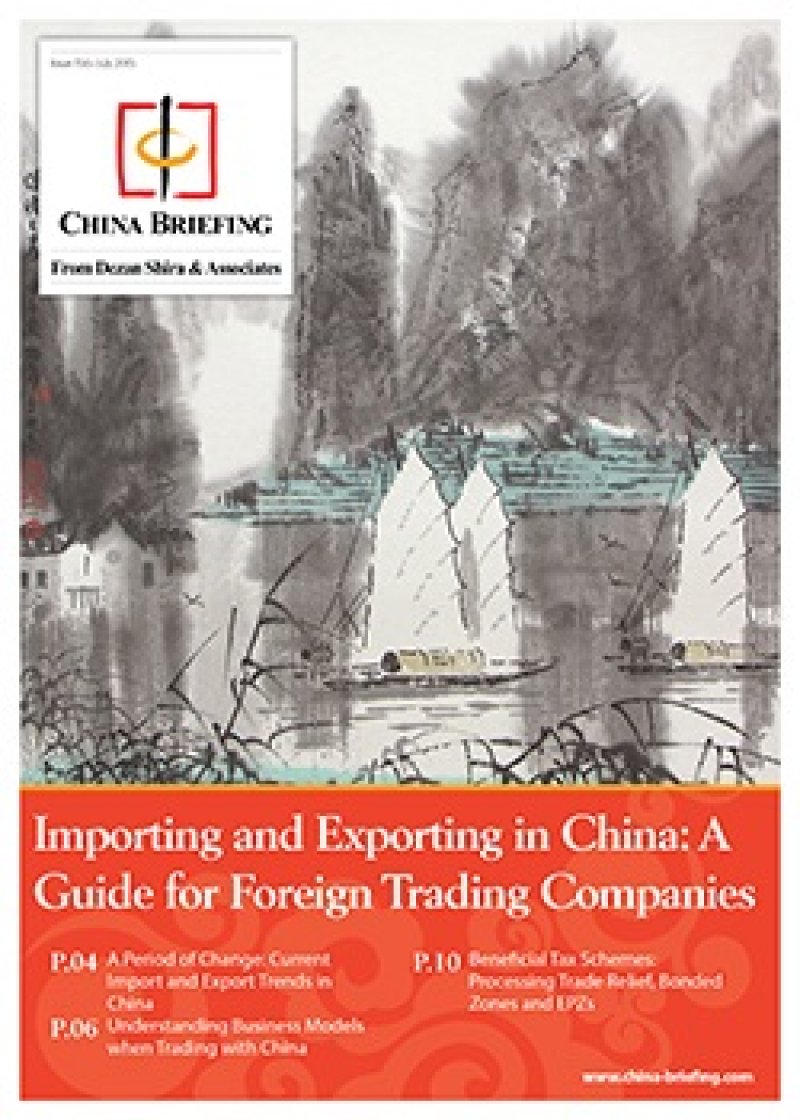Assessing the Hong Kong – Russia Double Taxation Agreement: Another Step Towards Amplifying China’s Eurasian Connection
By Dezan Shira & Associates
Editor: Xiao Anna Wang
The long-awaited Comprehensive Double Taxation Agreement (CDTA) between Hong Kong and Russia entered into force on July 29, 2016. The agreement will take effect on April 1, 2017 in Hong Kong and January 1, 2017 in Russia.
Signed at the beginning of 2016, the CDTA aims to provide greater certainty on taxing rights between Hong Kong and Russia, incentivizes foreign investment with reduced income tax and withholding tax rates, and helps investors to better assess their potential tax liabilities on business transactions.
Before the CDTA came into effect, companies operating in Hong Kong but listed in Russia were subject to income tax in both jurisdictions. In some cases, the taxation of repatriated profits of a Hong Kong company based in Russia would be determined by the tax bureau individually, depending on the source of the income.
For either case, tax credits will now be employed to relieve double taxation under the provisions of the treaty. The residence jurisdiction, either Hong Kong or Russia, is required to grant a tax credit for tax payable accrued in its counterpart. According to Article 2, Paragraph 3, the following tax categories are qualified for double tax avoidance:
(1) in the Hong Kong Special Administrative Region:
- profits tax;
- salaries tax;
- property tax; whether or not charged under personal assessment;
(2) in Russia:
- the tax on profits of organizations;
- the tax on income of individuals.
Under the agreement, the dividend withholding in Russia for qualified Hong Kong companies is now taxed at a lower five percent or ten percent than non-treaty companies, according to the shareholding of the dividend beneficiary. The agreement also provides a zero percent Russian withholding tax on interest and a cap of three percent in Russian withholding tax on royalties. Together, these provisions account for a cutback of 17 percent from the non-treaty tax rate. A detailed comparison of Russia’s withholding tax rates on Hong Kong residents before and after the agreement is shown below:

Meanwhile, the treaty specifies that profits arising from the operation of ships or aircraft in international traffic will be taxed only within the jurisdiction where the operating companies are registered.
In keeping with other CDTAs, the two parties have agreed to the mutual exchange of information for increasing tax transparency and combatting tax evasion.
![]() RELATED: Business Advisory Services from Dezan Shira & Associates
RELATED: Business Advisory Services from Dezan Shira & Associates
Pivot towards Asia
The signing of the CDTA with Hong Kong follows an eastward shift in Russia’s economic focus in recent years. Following the economic consequences of the sanctions placed on Russia from the EU and U.S. – which targeted not only individuals and companies in Russia’s military sector, but later prohibited exports of goods of dual use – Moscow has been pushing to consolidate its political and energy sector ties with Asia. Its focus is especially primed towards China, which is the second largest importer for Russian raw materials and energy.
One of the most prominent examples of the strengthened relationship between Russia and China is the historic 30-year gas deal between the two parties. The deal not only secured a long-term economic relationship grounded in Chinese dependency on Russian oil, but also encouraged economic development in China’s Far East. Last year, China started the construction of the proposed pipeline route that will deliver 38 billion cubic meters of Russian gas to Japan, northeastern China, South Korea and North Korea. In turn, Russia has intensified cooperation with China on various infrastructure projects along the China-led One Belt One Road Initiative, such as the ongoing construction of the Trans-Eurasian railway project.
The Hong Kong – China – Russia Benefits
Even though Beijing has eased regulations for businesses in recent years, Hong Kong still acts as a critical link between Russian and Mainland markets for both inbound and outbound investment. Governed by the “One Country, Two Systems” framework, Hong Kong enjoys a close political and economic connection with the Mainland while benefiting from well-developed legal and financial systems that favor foreign investment. Based on the current tax regime between Hong Kong and Beijing, companies operating in the Special Administrative Region benefit from various tax deductions laid out in the Mainland and Hong Kong CDTA. Meanwhile, the Mainland has streamlined the process for Hong Kong companies wishing to register in Mainland and provided investment incentives, such as zero tariffs for goods originating from Hong Kong. The newly enforced agreement between Russia and Hong Kong can further the existing tax benefits that encourage foreign companies to establish in Hong Kong as a stepping stone to tap the Mainland market.
In terms of international trade, Hong Kong has long been the re-export platform for both Russia and Mainland China. The bulk of Hong Kong’s trade with Russia is comprised of exports in goods originating from the Mainland. In 2015, 95 percent of total exports from Hong Kong were made in Mainland China, according to Hong Kong’s trade bureau. Primarily, these include telecommunications equipment, jewelry, clothing, toys and automatic data processing machines. On the other hand, Russia is one of the largest suppliers of natural resources to Hong Kong, exporting mainly jewelry, pearls, precious and semi-precious stones, compounds of precious metals, coal, silver and platinum.
![]() RELATED: Russia-Hong Kong СDTA Will Go Into Effect on January 2017
RELATED: Russia-Hong Kong СDTA Will Go Into Effect on January 2017
The agreement is also seen as a means for Hong Kong to extend its presence in Eurasia. Hong Kong has been actively promoting itself as the “Super Connector” along the One Belt One Road Initiative, determined to expand its current international tax treaty network with jurisdictions along the modern Silk Road. According to its Chief Executive, Hong Kong aims to seize the opportunities brought by the Initiative by negotiating with countries along the Belt and Road on investment protection agreements, CDTAs, and agreements on double taxation relief arrangements for shipping income.
Mainland China and Russia have recently enforced their own CDTA effective in the coming year, which competes with the CDTA between HK and Russia. For example, withholding tax on interest has been fully eliminated in the source jurisdiction under the provisions of the China-Russia CDTA, mirroring the Hong Kong – Russia agreement. However, there are many non-tax factors to be considered when deciding where to launch a businesses in Asia, including human resources and the accessibility of business intelligence. To better understand the business environment in Asia and compare the potential risks and opportunities between different regions, investors are advised to contact our in-house specialists at Dezan Shira & Associates.
|
Asia Briefing Ltd. is a subsidiary of Dezan Shira & Associates. Dezan Shira is a specialist foreign direct investment practice, providing corporate establishment, business advisory, tax advisory and compliance, accounting, payroll, due diligence and financial review services to multinationals investing in China, Hong Kong, India, Vietnam, Singapore and the rest of ASEAN. For further information, please email china@dezshira.com or visit www.dezshira.com. Stay up to date with the latest business and investment trends in Asia by subscribing to our complimentary update service featuring news, commentary and regulatory insight. |

 Tax, Accounting, and Audit in China 2016
Tax, Accounting, and Audit in China 2016
This edition of Tax, Accounting, and Audit in China, updated for 2016, offers a comprehensive overview of the major taxes that foreign investors are likely to encounter when establishing or operating a business in China, as well as other tax-relevant obligations. This concise, detailed, yet pragmatic guide is ideal for CFOs, compliance officers and heads of accounting who must navigate the complex tax and accounting landscape in China in order to effectively manage and strategically plan their China-based operations.
 Annual Audit and Compliance in China 2016
Annual Audit and Compliance in China 2016
In this issue of China Briefing, we provide a comprehensive analysis of the various annual compliance procedures that foreign invested enterprises in China will have to follow, including wholly-foreign owned enterprises, joint ventures, foreign-invested commercial enterprises, and representative offices. We include a step-by-step guide to these procedures, list out the annual compliance timeline, detail the latest changes to China’s standards, and finally explain why China’s audit should be started as early as possible.
Importing and Exporting in China: a Guide for Trading Companies
In this issue of China Briefing, we discuss the latest import and export trends in China, and analyze the ways in which a foreign company in China can properly prepare for the import/export process. With import taxes and duties adding a significant cost burden, we explain how this system works in China, and highlight some of the tax incentives that the Chinese government has put in place to help stimulate trade.
- Previous Article Knowledge is Power: Understanding the Education Market in China
- Next Article Resolving Labor Conflicts: New Regulations on Wage Payment Methods in Shanghai










